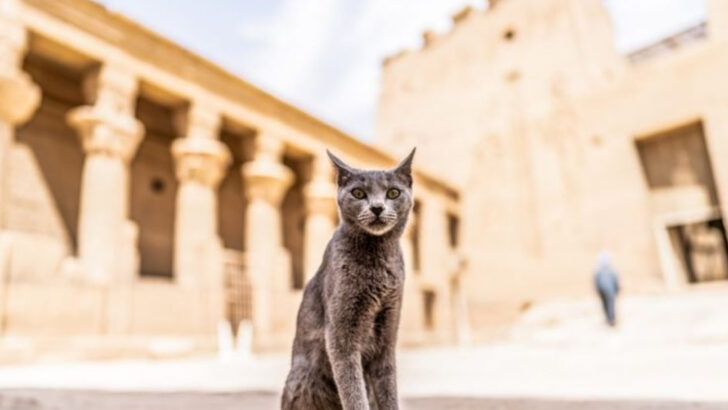The ancient Egyptians revered cats, seeing them as more than mere animals.
These creatures represented divine entities and held significant roles in the daily lives and spiritual beliefs of the Egyptian civilization.
From protection to symbolism, cats played a prominent part in the cultural and religious landscape of ancient Egypt.
This article explores ten fascinating reasons why cats were worshipped and the meaning behind this veneration.
Symbol of Protection
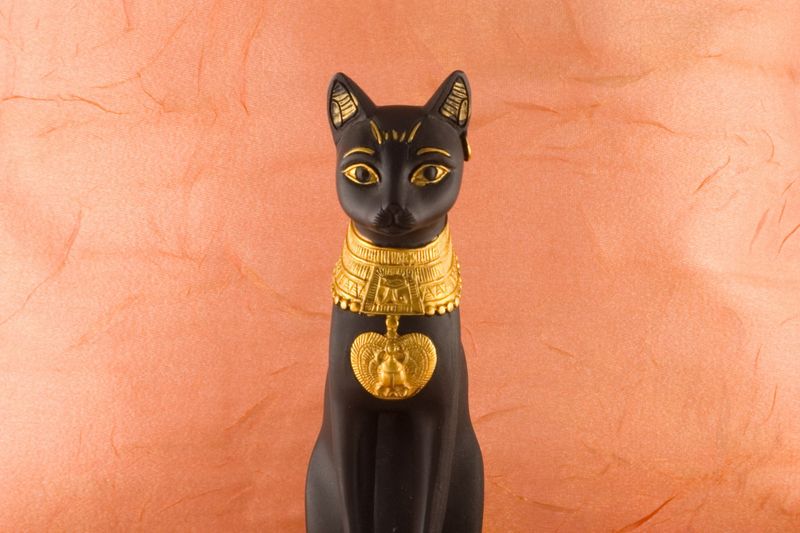
Cats in ancient Egypt were celebrated as guardians against evil spirits. Their presence was thought to ward off unwanted energies and keep homes safe.
An intriguing belief was that cats possessed a mystical aura that could shield their human companions. This protective nature extended beyond the physical realm, as Egyptians saw cats as spiritual protectors. Their watchful eyes and agility contributed to their guardian role. By keeping vermin away, cats also protected food supplies, crucial for survival in ancient times.
Did you know? Cats’ protective associations made them a common presence in Egyptian households.
Bastet – The Cat Goddess

Bastet, the revered cat goddess, epitomized grace and affection. Often depicted as a lioness or domestic cat, she symbolized home protection and family.
Temples across Egypt were dedicated to her, where people offered gifts for blessings. Bastet’s dual nature embodied both nurturing and fierce protection. Her festivals, marked by music and dance, celebrated her significance. In mythology, Bastet safeguarded the pharaoh and ensured fertility.
Her image adorned amulets and statues, reinforcing her divine connection. Cats, as her sacred animals, were believed to carry her spirit, linking them to the divine realm.
Divine Companions of Pharaohs
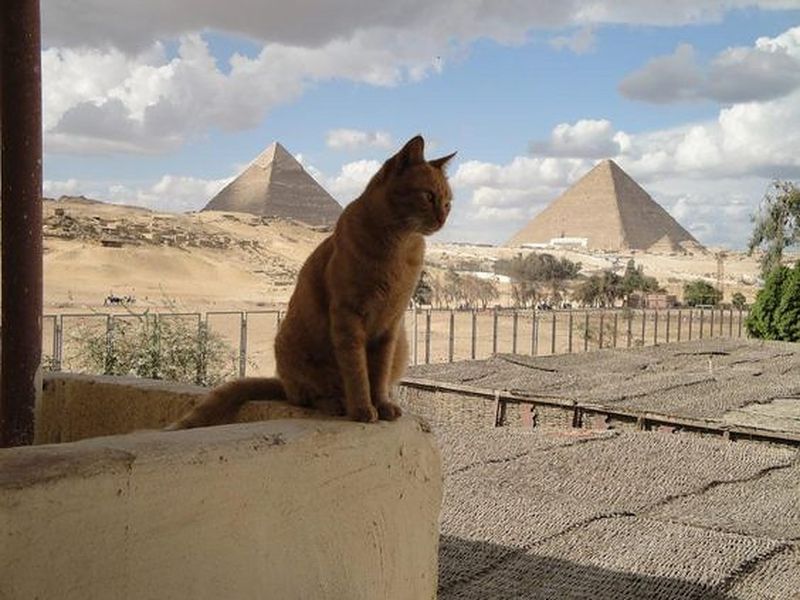
In the opulent courts of ancient Egypt, cats walked alongside pharaohs as divine companions. Their esteemed status granted them places in royal households, where they were pampered and revered.
The pharaoh’s cat was more than a pet; it was a symbol of divine favor, believed to bring luck and protection. Egyptian art frequently depicts cats in royal settings, highlighting their esteemed role.
Their presence in the palace was a reflection of their close connection to the gods. Cats were often buried with their royal owners, ensuring companionship in the afterlife.
Feline Representation in Art
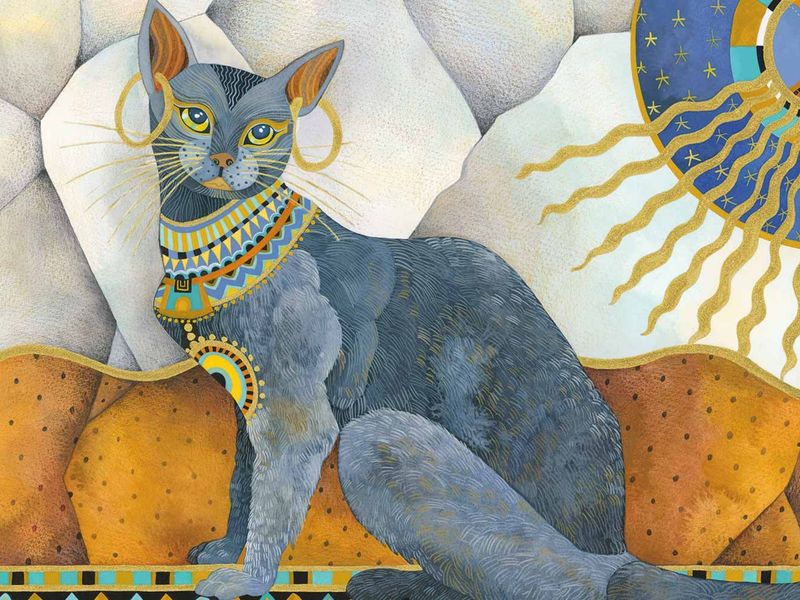
Art from ancient Egypt vividly portrays cats, underlining their cultural significance. Carvings and paintings often featured cats in everyday scenes, underscoring their role in society.
Artists captured their elegant forms and mysterious gazes with precision, reflecting the Egyptians’ admiration. Cats were not merely decorative elements but central figures in storytelling. Their depictions on pottery, jewelry, and frescoes highlight their revered status.
Through art, cats became enduring symbols of grace and agility. This artistic representation reinforced the connection between cats and the divine, immortalizing their presence in Egyptian culture.
Cats in Egyptian Mythology

In Egyptian mythology, cats bridged the human and divine worlds. Revered for their cunning and agility, they were associated with various deities, enhancing their mystical allure.
Myths often depicted them as protectors, warding off evil entities. The story of Ra, the sun god, features a cat battling the serpent Apophis, symbolizing the triumph of light over darkness. This association with victory and protection elevated cats to divine status.
Their mythological roles cemented their place in religious ceremonies and daily life, embodying qualities of resilience and strength that Egyptians admired.
Cats and the Afterlife
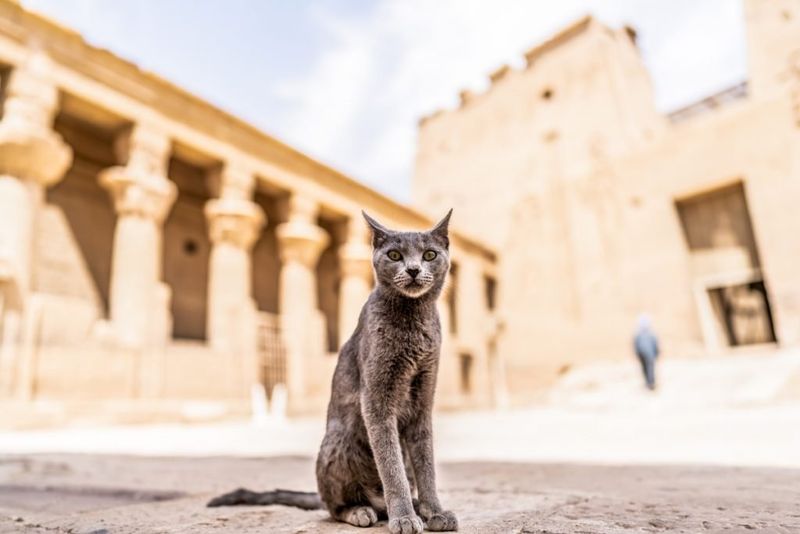
Cats held a significant position in ancient Egyptian afterlife beliefs. They were seen as guides, leading souls to the next world. Many were mummified, a testament to their importance.
This preservation was a privilege, underscoring their spiritual role. Tombs often had cat statues, ensuring a protective presence for the deceased. These feline guardians were believed to accompany souls, offering protection and companionship.
Their mummification rituals reflected the Egyptians’ deep reverence for cats, viewing them as eternal beings. Such practices highlight the profound bond between humans and cats, transcending the mortal realm.
Cats as Symbols of Fertility
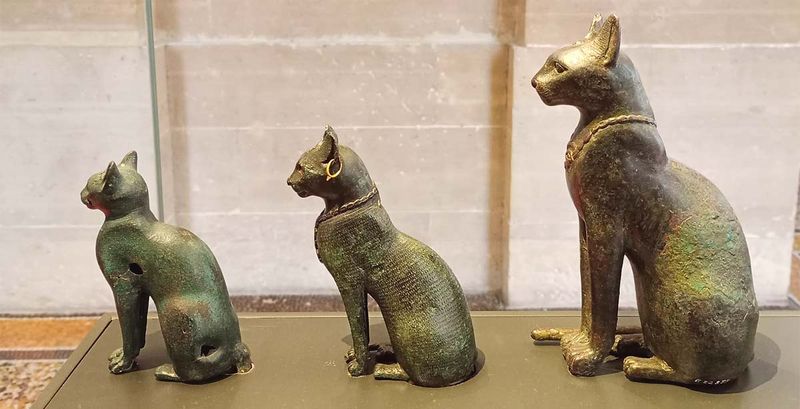
Beyond guardianship, cats symbolized fertility and prosperity in ancient Egypt. Their prolific breeding nature was seen as a blessing, reflecting abundance.
This association with fertility linked them to agricultural success and family growth. Women wore amulets featuring cats, seeking blessings for childbirth. The connection between cats and fertility permeated religious rites, where cats were honored as life-givers.
Their presence in homes was considered auspicious, encouraging growth and prosperity. Ancient texts often refer to cats in the context of renewal and vitality, marking them as key figures in ensuring societal continuity.
Cats and Daily Egyptian Life
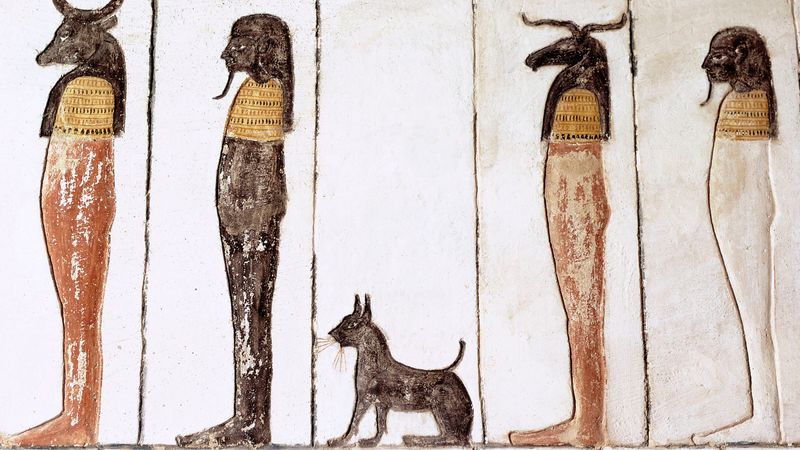
In the bustling life of ancient Egypt, cats were integral companions. Their presence in households was both practical and symbolic. Cats kept granaries free of rodents, safeguarding essential food supplies. Families cherished them for their companionship and charm.
Their graceful demeanor made them beloved pets, and their independent nature was admired. Beyond practicality, cats were seen as bringers of joy and relaxation. Their ability to coexist harmoniously with humans made them unique.
This relationship between humans and cats was a harmonious blend of utility and affection, solidifying cats’ place in everyday life.
Legal Protections for Cats

Cats enjoyed legal protection in ancient Egypt, reflecting their esteemed status. Killing a cat, even accidentally, was a grave offense, punishable by death.
This strict law highlighted the societal veneration they received. Cats were seen as embodiments of divine will, and harming them was akin to disrespecting the gods. Their sacred status ensured their safety and well-being. These laws safeguarded them from harm, allowing them to thrive.
The Egyptians’ dedication to protecting cats demonstrated their deep respect and understanding of their significance. This legal framework ensured that cats remained symbols of divine favor.
Cats in Religious Ceremonies
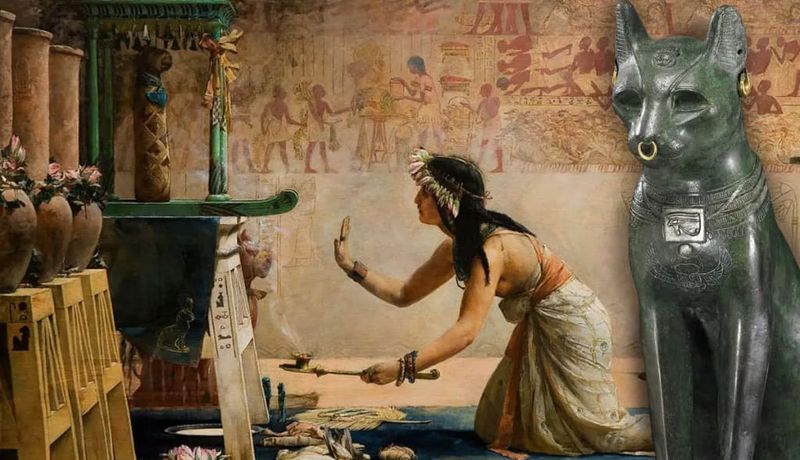
Religious ceremonies in ancient Egypt often featured cats, emphasizing their spiritual role. Seen as divine intermediaries, they were central to rituals and offerings. Priests incorporated cats in temple rites, believing their presence invoked blessings.
Festivals dedicated to cat deities, like Bastet, included elaborate processions. These events showcased cats’ spiritual significance, reinforcing their divine connection. Despite their earthly form, cats were revered as divine messengers, bridging humans and gods.
Their involvement in ceremonies highlighted their essential role in religious life. This blend of worship and reverence ensured cats’ legacy as sacred beings.

